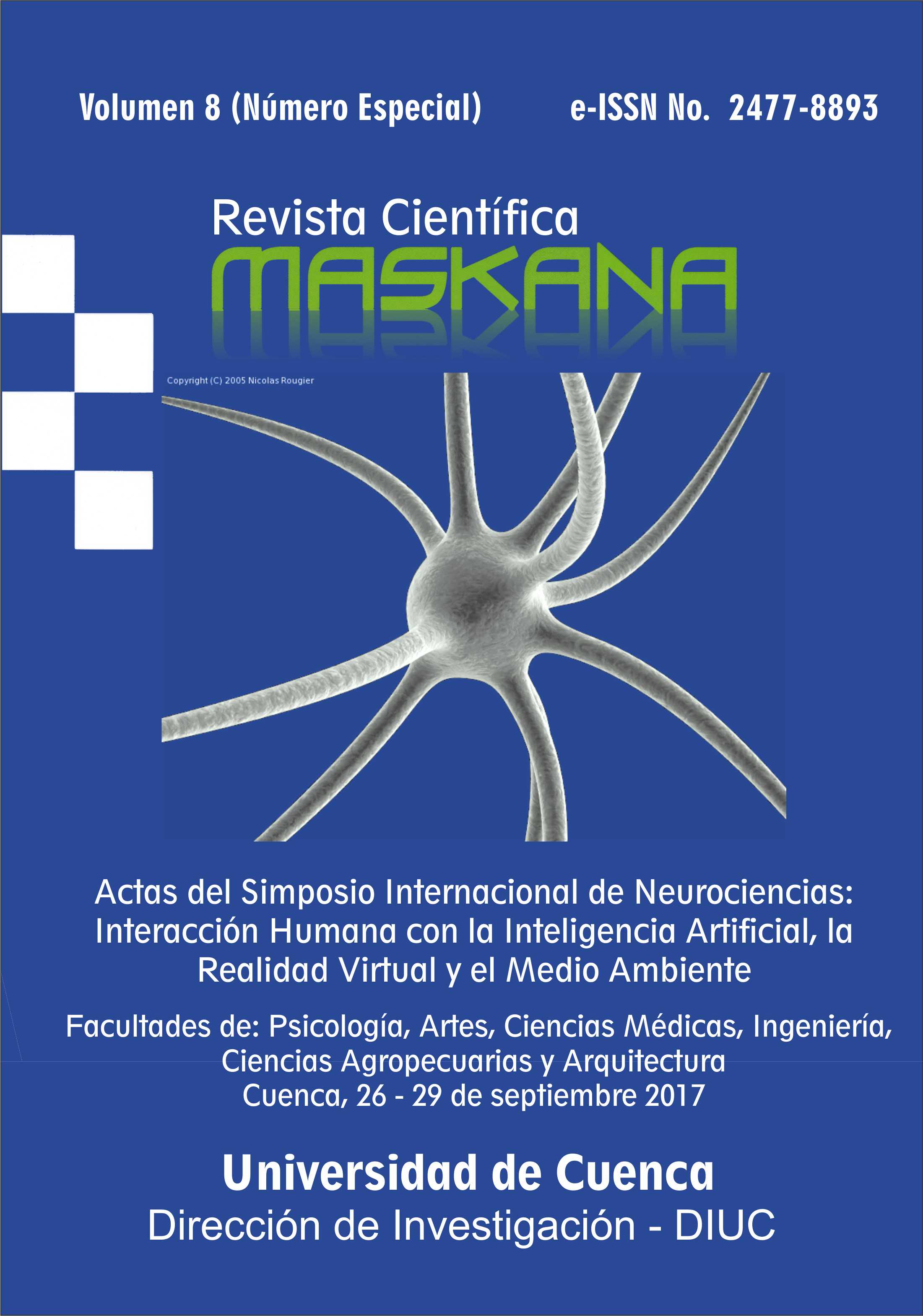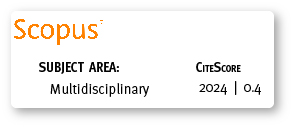Relación entre la memoria de trabajo, inhibición de respuesta, y habilidad verbal con el éxito académico y el comportamiento en adolescentes
Palabras clave:
funciones ejecutivas, éxito académico, memoria de trabajo, inhibición de respuesta, predictores de logro académico, correlaciónResumen
El objetivo de este estudio fue analizar, por una parte, tres funciones ejecutivas y su relación con el rendimiento académico. Por otra parte, indicar la relación entre estas funciones ejecutivas y el comportamiento de adolescentes dentro de su institución educativa. El número total de participantes fue 66. Se utilizaron las versiones en español del subtest Vocabulario WISC, Reading Span, y Hayling, para medir la habilidad verbal, memoria de trabajo e inhibición de respuesta, respectivamente. Una versión modificada del test Hayling que se aplicó, fue creada exclusivamente para esta investigación. Para medir el desempeño académico de los participantes, se usaron sus calificaciones correspondientes a un periodo de cinco meses en cuatro materias: Lenguaje, Biología, Historia y Matemática. Adicionalmente, se aplicó una encuesta a cuatro profesores distintos sobre el comportamiento de cada uno de los 66 participantes. Como consecuencia, el análisis estadístico a través de SPSS indica correlaciones positivas y negativas, no solamente entre las funciones ejecutivas y algunas materias, sino también con el mal comportamiento. Se concluye que la memoria de trabajo y la inhibición de respuesta de los participantes están relacionadas con la escritura, lectura, y con el comportamiento irrespetuoso y agresivo de los estudiantes participantes. Con base en los resultados preliminares del presente artículo, se prevé realizar otra investigación con una muestra mayor.
Descargas
Métricas
Citas
Adebayo, B. (2008). Cognitive and non-cognitive factors: affecting the academic performance and retention of conditionally admitted freshmen. Journal of College Admission, 200, 15-21.
Adolphs, R., Baron-Cohen, S., Tranel, D. (2002). Impaired recognition of social emotions following amygdala damage. Journal of Cognitive Neuroscience, 14(8), 1264-1274. doi: 10.1162/089892902760807258
Alexander, G. E., Crutcher, M. D. (1990). Functional architecture of basal ganglia circuits: neural substrates of parallel processing. Trends in Neurosciences, 13(7), 266-271. doi: 10.1016/0166-2236(90)90107-L
Alloway, T. P., Alloway, R. G. (2010). Investigating the predictive roles of working memory and IQ in academic attainment. Journal of Experimental Child Psychology, 106(1), 20-29. doi: 10.1016/j.jecp.2009.11.003
Ardila, A. (2008). On the evolutionary origins of executive functions. Brain and Cognition, 68(1), 92-99. doi: 10.1016/j.bandc.2008.03.003
Baddeley, A. D., Hitch, G. (1974). Working memory. In: Bower, G. H. (Ed.). Psychology of Learning and Motivation, Vol. 8. (pp. 47-89). Academic Press. doi: 10.1016/S0079-7421(08)60452-1
Baker, C. W., Little, T. D., Brownell, K. D. (2003). Predicting adolescent eating and activity behaviors: the role of social norms and personal agency. Official Journal of the Division of Health Psychology, American Psychological Association, 22(2), 189-198.
Best, J. R., Miller, P. H., Naglieri, J. A. (2011). Relations between executive function and academic achievement from ages 5 to 17 in a large, representative national sample. Learning and Individual Differences, 21(4), 327-336. doi: 10.1016/j.lindif.2011.01.007
Blakemore, S.-J., Choudhury, S. (2006). Development of the adolescent brain: implications for executive function and social cognition. Journal of Child Psychology and Psychiatry, and Allied Disciplines, 47(3-4), 296-312. doi: 10.1111/j.1469-7610.2006.01611.x
Burgess, P. W., Shallice, T. (1996). Response suppression, initiation and strategy use following frontal lobe lesions. Neuropsychologia, 34(4), 263-272.
Casey, B. J., Caudle, K. (2013). The {Teenage} {Brain}: {Self} {Control}. Current Directions in Psychological Science, 22(2), 82-87. doi: 10.1177/0963721413480170
Collette, F., der Linden, M., Delfiore, G., Degueldre, C., Luxen, A., Salmon, E. (2001). The functional anatomy of inhibition processes investigated with the {Hayling} task. NeuroImage, 14(2), 258-267. doi: 10.1006/nimg.2001.0846
Conger, A. J., Conger, J. C. (1975). Reliable {Dimensions} for {Wisc} {Profiles}. Educational and Psychological Measurement, 35(4), 847-863. doi: 10.1177/001316447503500412
Crone, E. A. (2009). Executive functions in adolescence: inferences from brain and behavior. Developmental Science, 12(6), 825-830. doi: 10.1111/j.1467-7687.2009.00918.x
Daneman, M. (1991). Working memory as a predictor of verbal fluency. Journal of Psycholinguistic Research, 20(6), 445-464. doi: 10.1007/BF01067637
Deary, I. J., Strand, S., Smith, P., Fernandes, C. (2007). Intelligence and educational achievement. Intelligence, 35(1), 13-21. doi: 10.1016/j.intell.2006.02.001
Diamond, A. (2013). Executive Functions. Annual Review of Psychology, 64(1), 135-168. doi: 10.1146/annurev-psych-113011-143750
Elliott, R. (2003). Executive functions and their disorders. British Medical Bulletin, 65, 49-59.
Elosúa, M. R., Gutiérrez, F., Madruga, J., Luque, J., Gárate, M. (1996). Adaptación española del “reading span test” de Daneman y Carpenter. Psicothema, 8(2), 383-395.
Friedman, N. P., Miyake, A. (2004). The reading span test and its predictive power for reading comprehension ability. Journal of Memory and Language, 51(1), 136-158. doi: 10.1016/j.jml.2004.03.008
Hattie, J. (2008). Visible learning: A synthesis of over 800 meta-analyses relating to achievement (1a ed.). London , UK: Routledge.
Hauke, J., Kossowski, T. (2011). Comparison of values of Pearson’s and Spearman’s correlation coefficients on the same sets of data. Quaestiones Geographicae, 30(2), 87-93.
Henry, J. D., Crawford, J. R. (2004). A meta-analytic review of verbal fluency performance following focal cortical lesions. Neuropsychology, 18(2), 284-295. doi: 10.1037/0894-4105.18.2.284
Hofmann, W., Schmeichel, B. J., Baddeley, A. D. (2012). Executive functions and self-regulation. Trends in Cognitive Sciences, 16(3), 174-180. doi: 10.1016/j.tics.2012.01.006
Jurado, M. B., Rosselli, M. (2007). The elusive nature of executive functions: a review of our current understanding. Neuropsychology Review, 17(3), 213-233. doi: 10.1007/s11065-007-9040-z
Laidra, K., Pullmann, H., Allik, J. (2007). Personality and intelligence as predictors of academic achievement: A cross-sectional study from elementary to secondary school. Personality and Individual Differences, 42(3), 441-451. doi: 10.1016/j.paid.2006.08.001
Malecki, C. K., Elliott, S. N. (2002). Children’s social behaviors as predictors of academic achievement: A longitudinal analysis. School Psychology Quarterly, 17(1), 1-23. doi: 10.1521/scpq.17.1.1.19902
Mills, K. L., Goddings, A.-L., Clasen, L. S., Giedd, J. N., Blakemore, S.-J. (2014). The developmental mismatch in structural brain maturation during adolescence. Developmental Neuroscience, 36(3-4), 147-160. doi: 10.1159/000362328
Miyake, A., Friedman, N. P., Emerson, M. J., Witzki, A. H., Howerter, A., Wager, T. D. (2000). The unity and diversity of executive functions and their contributions to complex “Frontal Lobe” tasks: a latent variable analysis. Cognitive Psychology, 41(1), 49-100. doi: 10.1006/cogp.1999.0734
Muijs, R. D. (1997). Predictors of academic achievement and academic self-concept; a longitudinal perspective. The British Journal of Educational Psychology, 67(3), 263-343. doi: 10.1111/j.2044-8279.1997.tb01243.x
Obeso, I., Wilkinson, L., Casabona, E., Bringas, M. L., Álvarez, M., Álvarez, L., … Jahanshahi, M. (2011). Deficits in inhibitory control and conflict resolution on cognitive and motor tasks in Parkinson’s disease. Experimental Brain Research, 212(3), 371-384. doi: 10.1007/s00221-011-2736-6
Paunonen, S. V, Ashton, M. C. (2001). Big five predictors of academic achievement. Journal of Research in Personality, 35(1), 78-90. doi: 10.1006/jrpe.2000.2309
Pérez-Pérez, A., Matias-Guiu, J. A., Cáceres-Guillén, I., Rognoni, T., Valles-Salgado, M., Fernández-Matarrubia, M., … Matías-Guiu, J. (2016). The Hayling test: Development and normalization of the spanish version. Archives of Clinical Neuropsychology: The Official Journal of the National Academy of Neuropsychologists, 31(5), 411-419. doi: 10.1093/arclin/acw027
Pezzuti, L., Orsini, A. (2016). Are there sex differences in the Wechsler Intelligence Scale for children - Forth Edition? Learning and Individual Differences, 45, 307-312. doi: 10.1016/j.lindif.2015.12.024
Piaget, J. (1952). The origins of intelligence in children; New York, US: International Universities Press.
Piedra, E., Tene, E. (2013). Funciones ejecutivas y sus implicaciones en el aprendizaje en niños del tercer año de educación básica. Análisis en dos escuelas fiscales de la cuidad de Azogues. Tesis de Postgrado, Universidad del Azuay, Cuenca. Retrieved from http://dspace.uazuay.edu.ec/handle/datos/2539
Pluck, G., Ruales-Chieruzzi, C. B., Paucar-Guerra, E. J., Andrade-Guimaraes, M. V., Trueba, A. F. (2016). Separate contributions of general intelligence and right prefrontal neurocognitive functions to academic achievement at university level. Trends in Neuroscience and Education, 5(4), 178-185. doi: 10.1016/j.tine.2016.07.002
Popkin, B. M., Lim-Ybanez, M. (1982). Nutrition and school achievement. Social Science & Medicine, 16(1), 53-61. doi: 10.1016/0277-9536(82)90423-3
Redick, T. S., Broadway, J. M., Meier, M. E., Kuriakose, P. S., Unsworth, N., Kane, M. J., Engle, R. W. (2012). Measuring working memory capacity with automated complex span tasks. European Journal of Psychological Assessment, 28(3), 164-171. doi: 10.1027/1015-5759/a000123
Redolar, D. (2014). Neurociencia cognitiva. Madrid, España: Editorial Médica Panamericana.
Schlösser, R., Hutchinson, M., Joseffer, S., Rusinek, H., Saarimaki, A., Stevenson, J., … Brodie, J. D. (1998). Functional magnetic resonance imaging of human brain activity in a verbal fluency task. Journal of Neurology, Neurosurgery & Psychiatry, 64(4), 492-498.
Sha, T. L. (2010, May). Motivational beliefs, ethnic identity, and sense of belonging: Relations to school engagement and academic achievement. University of Houston, Houston. Retrieved from https://uh-ir.tdl.org/uh-ir/handle/10657/ETD-UH-2010-05-36
St Clair-Thompson, H. L., Gathercole, S. E. (2006). Executive functions and achievements in school: Shifting, updating, inhibition, and working memory. Quarterly Journal of Experimental Psychology (2006), 59(4), 745-759. doi: 10.1080/17470210500162854
Stuss, D. T. (1992). Biological and psychological development of executive functions. Brain and Cognition, 20(1), 8-23. doi: 10.1016/0278-2626(92)90059-U
Stuss, D. T., Alexander, M. P. (2000). Executive functions and the frontal lobes: a conceptual view. Psychological Research, 63(3-4), 289-298.
Tirapu-Ustárroz, J., Muñoz-Céspedes, J. M., Pelegrín-Valero, C. (2002). Funciones ejecutivas: necesidad de una integración conceptual. Revista de Neurología, 34(07), 673-685.
Verplanken, B., Aarts, H., van Knippenberg, A., Moonen, A. (1998). Habit versus planned behaviour: a field experiment. The British Journal of Social Psychology, 37(1), 111-128. doi: 10.1111/j.2044-8309.1998.tb01160.x
Villagómez, D. (2017). Estudio correlacional entre la memoria de trabajo, inhibición de respuesta, y habilidad verbal con el éxito académico y el comportamiento en adolescentes. Universidad San Francisco de Quito, Quito. Retrieved from http://repositorio.usfq.edu.ec/handle/23000/6546
Wechsler, D. (2004). Wechsler intelligence scale for children (4a ed.). Madrid, España: PsychCorp.
Whiteside, D. M., Kealey, T., Semla, M., Luu, H., Rice, L., Basso, M. R., Roper, B. (2016). Verbal fluency: language or executive function measure? Applied Neuropsychology. Adult, 23(1), 29-34. doi: 10.1080/23279095.2015.1004574
Descargas
Publicado
Cómo citar
Número
Sección
Licencia
Copyright © Autors. Creative Commons Attribution 4.0 License para cualquier artículo enviado a partir del 6 de junio de 2017. Para los manuscritos presentados anteriormente, se utilizó la licencia CC BY 3.0.
![]()
Usted es libre de:
 |
Compartir — compartir y redistribuir el material publicado en cualquier medio o formato. |
 |
Adaptar — combinar, transformar y construir sobre el material para cualquier propósito, incluso comercialmente. |
Bajo las siguientes condiciones:
 |
Atribución — Debe otorgar el crédito correspondiente, proporcionar un enlace a la licencia e indicar si se realizaron cambios. Puede hacerlo de cualquier manera razonable, pero de ninguna manera que sugiera que el licenciador lo respalda a usted o a su uso. |
| Sin restricciones adicionales: no puede aplicar términos legales o medidas tecnológicas que restrinjan legalmente a otros a hacer cualquier cosa que permita la licencia. |
Mayor información sobre este acuerdo de autoría y licencia, transferencia de derechos o solicitudes de reproducción, pueden ser consultados en este enlace.









